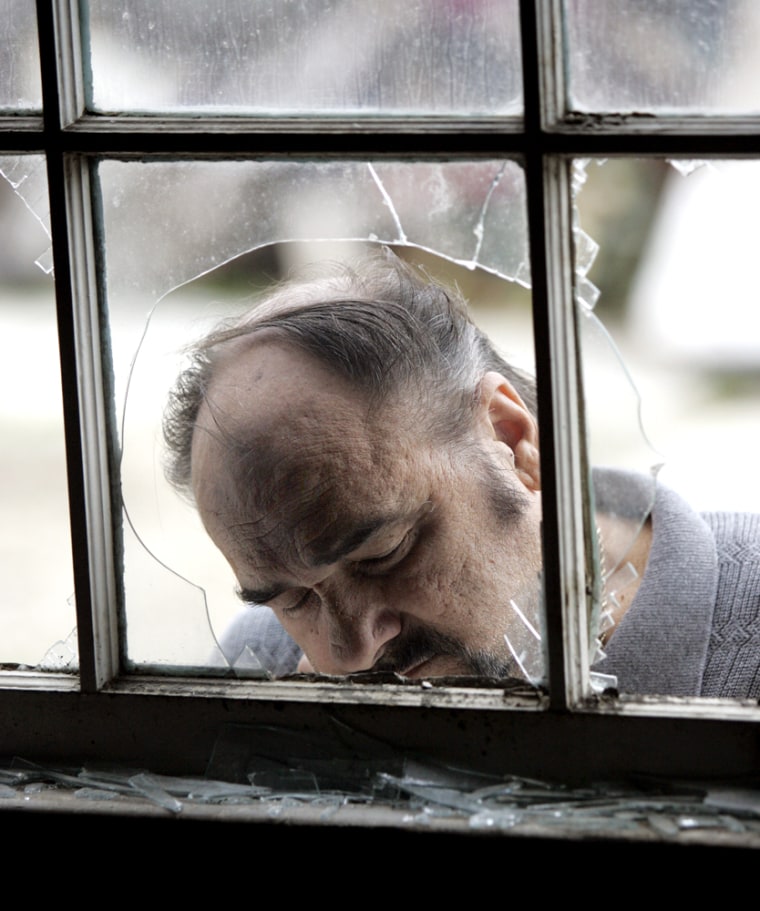On Aug. 29 Katrina ravaged the Gulf Coast, followed in quick succession by Rita, in the most destructive hurricane season in U.S. history. But six months and billions of dollars in relief later, it's clear that Katrina will be with the region, indeed the country, for a long time to come.
Perhaps nowhere did the spirit of survival and the ongoing frustration mix more poignantly than in New Orleans during its first post-Katrina Mardi Gras.
Even as displaced residents flooded back to New Orleans to celebrate, determined to rejuvenate the spirit of the place, tens of thousands of residents in the region were struggling with insurance companies, searching for new jobs, or trying to get more aid from the government. Psychologists report high rates of post-traumatic stress, especially among police officers.
Meanwhile, the images of desperate people trapped in sweltering convention centers, and on bridges surrounded by rising water are etched in the country's collective conscience. Lawmakers on Capitol Hill remain embroiled in angry debate over what went wrong and who is to blame for the poor government response to this epic disaster.
Mixed success, mixed feelings
Along New Orlean's Bourbon Street this week, there was no question that the city's residents would like to put the disaster behind them. Cheering revelers wearing purple and green beads were out before dawn Tuesday even as workers with brooms and trash barrels swept up piles of debris in the streets.
Restaurants reported brisk business, but there are fewer restaurants: Only 506 of the 1,882 in business before Katrina were open, according to the New Orleans Restaurant Association.
Hotel rooms were filled, but again, there are fewer — about 15,000 instead of the usual 25,000 — according to the Greater New Orleans Hotel & Lodging Association. And some of those are filled with construction workers and evacuees.
Although the number of celebrants was smaller this year, many local residents appeared to be joining out-of-towners in the French Quarter, said Mark Wilson, president of the French Quarter Business Association.
But to some of Katrina’s hardest-hit victims, the party seems in poor taste. From Houston, refugee Samuel Spears said footage from his hometown of bead-tossing and carousing tourists just made him angry.
“With them putting on Mardi Gras, without still having not addressed the basic human needs in this city — why that’s just a slap in the face,” said Spears. “I can’t go home, but they can have a parade? That’s ridiculous.”
Billions spent, billions needed
Throughout the region, billions have been spent by government and private charities in emergency and longer-term aid to the hurricane-stricken region. But recovery would take billions more. And years.
In Louisiana, where hurricanes Katrina and Rita claimed more than a thousand lives and forced hundreds of thousands of people out of their homes, the Federal Emergency Management Agency has spent more than $12 billion for rescue operations, housing and living expenses, property losses, crisis counseling and other services.
And yet, tens of thousands remained displaced — living in FEMA trailers near their old homes, or in far-flung locations from Houston to New York. Many haven't decided whether to return.
In Waveland-Bay St. Louis, Miss., a coastal community , the disaster response center has been operating 24-hours a day for six months. At this point, the county reports some 3.7 billion cubic meters of storm debris have been removed from public rights-of-way — 51 percent, by their estimates. More than $141 million has been spent on public assistance, and more than 8,500 FEMA trailers are occupied.
Still, "," writes MSNBC.com's Brock Meeks, who just returned from a week-long reporting trip to the area.
It is a story that is repeated, with variations, all along the Gulf Coast.
'A huge hole in my brain'
Meanwhile, some people displaced by the storm are only now being reunited with loved ones. Others are just identifying the bodies of relatives and friends who died in the storm.
Anecdotally, the after-effects for survivors are profound and long-lasting, beyond the simple loss of material possessions.
" where my short-term memory used to be," writes Steve Harper, a teacher and jazz musician from Bay St. Louis, who lost his home and the schools where he taught. Initially, he says, he found consolation in the fact that many friends hit by Katrina seemed to be suffering the same thing. Then he changed his mind. "The fact that it's happening to everyone makes it scarier now that I think about it.
"Now is the time when we're having to decide how to rebuild our destroyed towns," he writes. "But this is all happening when our brains aren't working optimally."

It's not that surprising, according to a psychologist who has treated many people suffering the emotional trauma of the storms.
Dr. Joan Archer has worked with first responders in St. Tammany Parish, north of New Orleans, and she’s counseled teachers and children in the public school system there. Archer says police officers, in particular, have suffered severe post-traumatic stress. Some have suffered from frequent flashbacks of the harrowing events of the storm.
As Archer puts it: “Katrina is not finished claiming her victims.”
Planning for the next round
But it is time to start planning for the next hurricane season.
At the same time, many hospitals, governments and other services are working in marginal conditions or not at all. Infrastructure, especially bridges and levies remain under repair.
And some officials are worried about what to do with the tens of thousands of people who, thanks to Katrina, call a FEMA trailer home.
In Louisiana’s St. Tammany Parish, just north of New Orleans, 45,000 homes were destroyed by Katrina. About half the people who lived in them are still in trailers.
Parish administrator Kevin Davis is grateful for the help but says he’s been pleading with FEMA for months to come up with an exit strategy for the next hurricane. He says he has seen no evidence of planning for an evacuation.